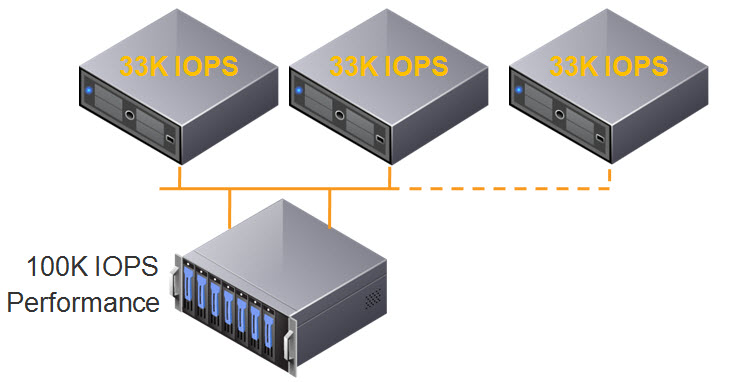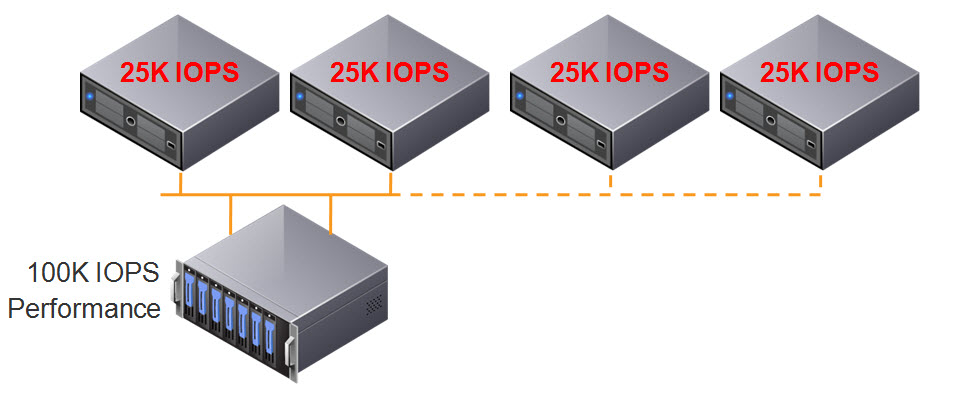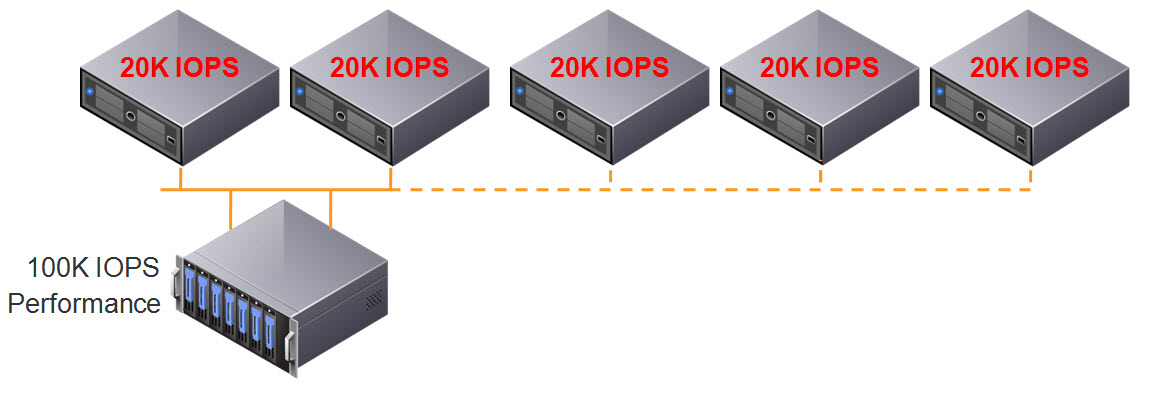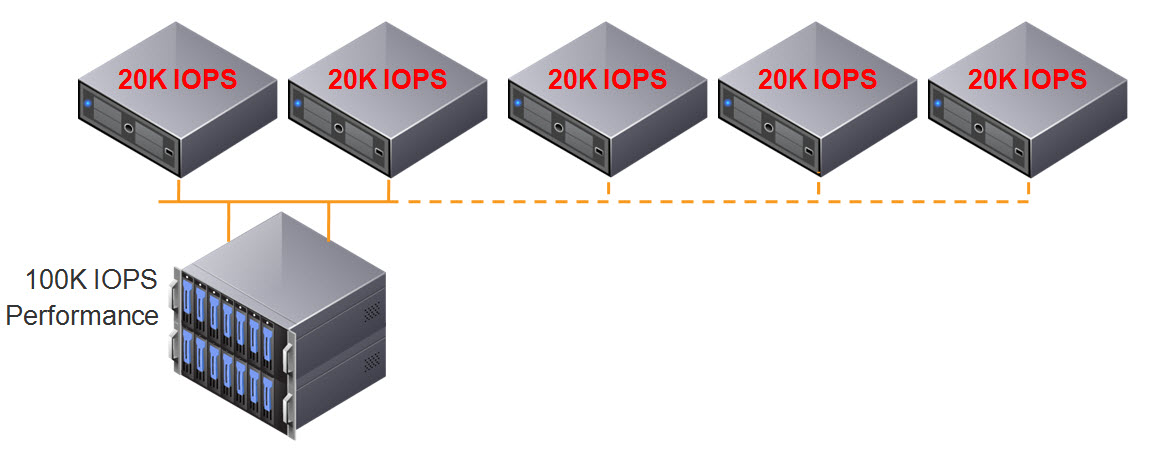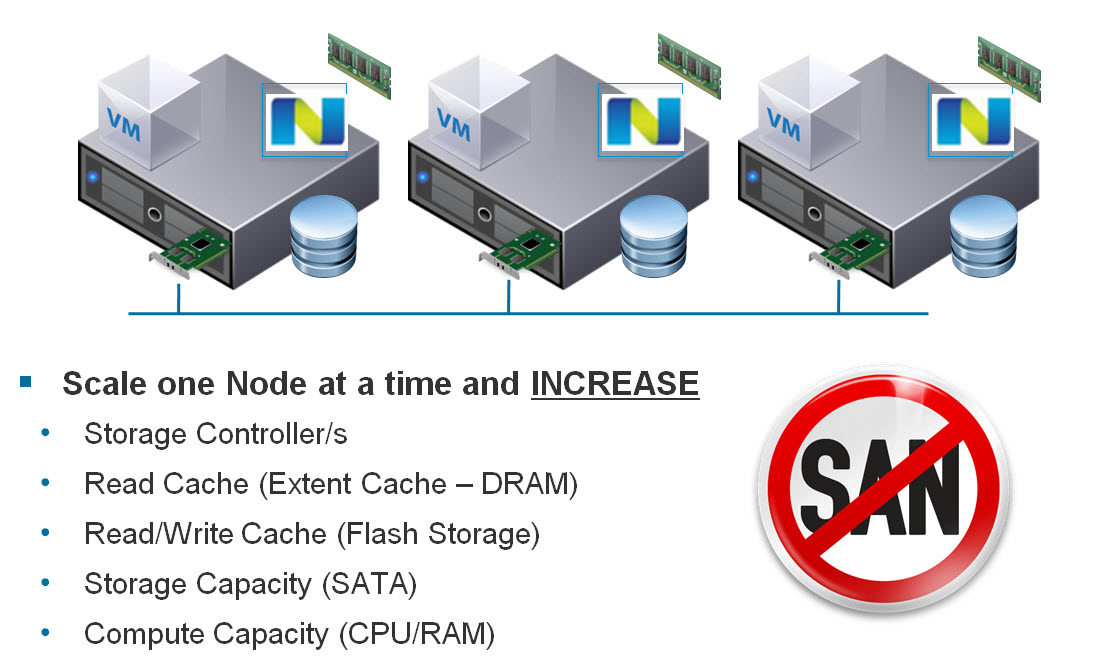A while back I saw news about the Australian Tax Office (ATO) having a major outage of their storage solution and recently an article was posted titled “ATO reveals cause of SAN failure” which briefly discusses a few contributing factors for the five-day outage.
The article from ITnews.com.au quoted ATO commissioner Chris Jordan in saying:
The failure of the 3PAR SAN was the result of a confluence of events: the fibre optic cables feeding the SAN were not optimally fitted, software bugs on the SAN disk drives meant stored data was inaccessible or unreadable, back-to-base HPE monitoring tools weren’t activated, and the SAN configuration was more focused on performance than stability or resilience, Jordan said.
Before we get into breaking down the issues, I want to start by saying while this specific incident was with HPE equipment, this is not isolated to HPE and every vendor has had customers suffer similar issues. The major failing in this case, and in the vast majority of failures (especially extended outages), come back to the enterprise architect/s and operations teams failing to do their job. I’ve seen this time and time again, yet only a very small percentage of so called architects have a methodology and an even smaller percentage follow one in any meaningful way on a day to day basis.
Now back to the article, let’s break this down to a few key points.
1. The fibre optic cables feeding the SAN were not optimally fitted.
While the statement is a bit vague, cabling issues are a common mistake which can and should be easily discovered and resolved prior to going into production. As per Nutanix Platform Expert (NPX) methodology, an “Operational Verification” document should outline the tests required to be performed prior to a system going into production and/or following a change.
An example of a simple test is for a Host (Server) or SAN dual connected to an FC fabric to disconnect one cable and confirm connectivity remains, and then replace the cable and disconnect the other cable and again confirm connectivity,
Another simple test is to remove the power from a FC switch and confirm connectivity via the redundant switch then replace the power and repeat on the other FC switch.
Had an Operational Verification document been created to an NPX standard, and subsequently followed prior to going live and after any changes, this cabling issue would highly likely not have been a contributing factor to the outage.
This is an architectural and operational failure. The reason it’s an operational failure is because no engineer worth having would complete a change without an operational verification document/s to follow to validate a successful implementation/change.
2. Software bugs on the SAN disk drives meant stored data was inaccessible or unreadable.
In my opinion this is where the vendor is likely more at fault than the customer, however customers and their architect/s need to mitigate against these types of risks. Again an Operational Verification document should have tests which confirm functionality (in this case, simple read operations) from the storage, during normal and degraded scenarios such as drive pulls (simulating SSD/HDD failures) and drive shelve loss (i.e.: The loss of a bulk number of drives in a shelf, typically between 12 and 24).
Failure scenarios should be clearly documented and the risk/s, mitigation/s and recovery plan all of which needs to be mapped back to the business requirements, e.g.: Recovery Time Objective (RTO), Recovery Point Objective (RPO).
Again, this is both an architectural and operational failure as the architect should have documented/highlighted the risks as well as mitigation and recovery strategy, while the engineers should never have accepted a solution into BAU (Business as Usual) operations without these documents.
3. “Back-to-base HPE monitoring tools weren’t activated”
There is no excuse for this, and the ATOs architects and to a lesser extent the operational team need take responsibility here. While a vendor should continually be nagging customers to enable these tools, any enterprise architect worth having mandates monitoring tools sufficient to ensure continuous operation of the solution they design. The Operation Verification document would also have steps to test monitoring tools and ensure the alerting and call home functionality is working both before going into production and at scheduled intervals to ensure continued operation.
This is yet another architectural and operational failure.
4. SAN configuration was more focused on performance than stability or resilience.
This not only doesn’t surprise me but highlights a point I have raised for many years being there is a disproportionately high focus on performance, specifically peak performance, compared to data integrity, resiliency and stability.
In 2015 I wrote “Peak Performance vs Real World Performance” after continuously having to have these discussions with customers. The post covers the topic is reasonable depth but some of the key points are:
- Peak performance is rarely a significant factor for a storage solution.
- Understand and document your storage requirements / constraints before considering products.
- Create a viability/success criteria when considering storage which validates the solution meets your requirements within the constraints.
In this case the architect/s who designed the solution had tunnel vision around performance, when the solution likely didn’t need to be configured in such a way to meet the requirements assuming they were well understood and documented/validated.
If the SAN needed to be configured in the way it did to meet the performance requirements, then it was simply the wrong solution because it was not configured to meet the other vastly more important requirements around availability, resiliency and recoverability and the solution was certainly not validated against any meaningful criteria before going into production or many of these issues would not have occurred, or in the unlikely event of multiple concurrent failures, the recoverability requirements were not designed for or understood sufficiently.
This is again an architectural and operational failure.
ATO commissioner Chris Jordan also stated:
While only 12 of 800 disk drives failed, they impacted most ATO systems.
This means the solution was designed/configured with a tolerance for just 1.5% of drives to fail before a catastrophic failure would occur. This in my mind is so far from a minimally viable solution it’s not funny. What’s less funny is that this fact is unlikely to have been understood by the ATO, which means the failure scenarios and associated risks were not documented and mitigated in any meaningful way.
As an example, in even a small four node Nutanix solution with just 24 drives, an entire nodes worth of drives (6) can be lost concurrently (that’s 25%) without data loss or unavailability. In a 5 node Nutanix NX-8150 cluster with RF3, up to 48 drives (of a total 120, which is 40%) can be lost without data loss or unavailability, and the system can even self-heal without hardware replacement to restore resiliency automatically so further failures can be tolerate. This kind of resiliency/recoverability is essential for modern datacenters and something that would have at least mitigated or even avoided this outage altogether.
But this isn’t a product pitch, this is an example of what enterprise architects need to consider when choosing infrastructure for a project, i.e.: What happens if X,Y and/r Z fails and how does the system recover (i.e. Manually, Automatically etc).
Yet another thing which doesn’t surprise me in the fact failure domains do not appear to have been considered as the recovery tools were located on the SAN in which they were required to protect.
Additionally, some of the recovery tools that were required to restore the equipment were located on the SAN that failed.
It is critical to understand failure scenarios!! Wow I am sounding like a broken record but the message is simply not getting through to the majority of architects.
Recovery/management tools are no use to you when they are offline. If they are on the same infrastructure that requires the tools to be online to be able to recover, then your solutions recoverability is at high risk.
Yet another architectural failure followed by an operations team failure for accepting the environment and not highlighting the architecture failures.
In most, if not all enterprise environments, separate management clusters using storage from a separate failure domain is essential. It’s not a “nice to have”, it’s essential. It is very likely the five-day outage would have been reduced, or at least the cause been diagnosed much faster had the ATO had a small, isolated management cluster running the tooling required to diagnose the SAN.
The article concludes with a final quote from ATO commissioner Chris Jordan:
The details are confidential, he said, but the deal recoups key costs incurred by the ATO, and gives the agency new and “higher-grade” equipment to equip it with a “world-class storage network.
I am pleased the vendor (in this case HPE) has taken at least some responsibility and while the details are confidential, from my perspective higher grade equipment and world class storage network mean nothing without an enterprise architect who follows a proven methodology like NPX.
If the architect/s don’t document the requirements, risks, constraints and assumptions and design a solution with supporting documentation which map the solution back to these areas and then document a comprehensive Operational verification procedures for moving into production and for subsequent changes before declaring a change successful, the ATO (and other customers in similar positions) are destined to repeat the same mistakes.
If anyone from the ATO happens to read this, ensure your I.T team have a solid methodology for the new deployment and if they don’t feel free to reach out and I’ll raise my hand to get involved and lead the project to a successful outcome following NPX methodology.
In closing, everyone involved in a project must take responsibility. If the architect screws up, the ops team should call it out, if the ops team call it out and the project manager ignores it, the ops team should escalate. If the escalation doesn’t work, document the issues/risks and continue making your concerns known even after somebody accepts responsibility for the risk. After all, a risk doesn’t magically disappear when a person accepts responsibility, it simply creates a CV generating event for that person when things do go wrong and then the customer is still left up the creek without a paddle.
It’s long overdue so called enterprise architects live up to the standard at which they are (typically) paid. Every major decision by an architect should be documented to a minimum of the standard shown in my Example Architectural Decision section of this blog as well as mapped back to specific customer requirements, risks, constraints and assumptions.
For the ATO and any other customers, I recommend you look for architects with proven track records, portfolios of project documentation which they can share (even if redacted for confidentiality) as well as certifications like NPX and VCDX which require panel style reviews by peers, not multiple choice exams which are all but a waste of paper (e.g.: MCP/VCP/MCSE/CCNA etc). The skills of a VCDX/NPX are transferable to non-VMware/Nutanix environments as it’s the methodology which forms most of the value, the product experience from these certs still has value is also transferable as learning new tech is much easier than finding a great enterprise architect!
And remember, when it comes to choosing an enterprise architect…



